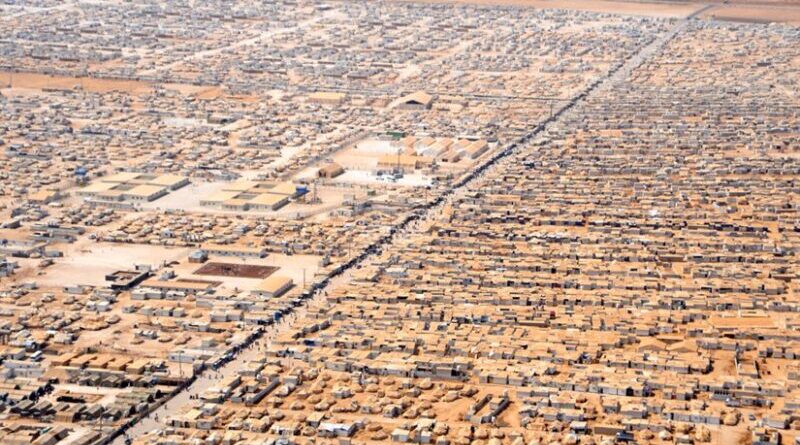The EU-Jordan Experiment: Towards Easing The Refugee Issue – Analysis
By IPCS
By Roshan Iyer*
On 20 July 2016, the EU and the Kingdom of Jordan entered into a free trade deal, the first of its kind in the region. If optimally utilised, the deal opens doors for significant investment into Jordan and promises to create a large number of jobs. However, the most salient feature of these jobs will be that a certain percentage of them will be set aside for Syrian refugees. Could this deal mark the first step towards integrating the Syrian refugee population in Jordan?
The Deal: A Brief Overview
The deal reduced restrictions on 52 product groups, including all types of textiles, clothing, fabric and yarns, which Jordan exports. The agreement specifically simplified ‘rules of origin’, the technical criteria that determine whether a specific product qualifies for preferential access under a given trade agreement, if certain conditions are met. Under this 10 year agreement, in order to qualify, producers must be located in specified industrial areas and development zones in Jordan and at least 15 per cent (to increase to 25 per cent in the third year of the agreement) of their employees must be from the 650,000 Syrian refugees in Jordan. This agreement currently applies to 18 Special Economic Zones (SEZ). In conjunction with the deal, the EU pledged 100 million Euros in humanitarian aid to be distributed by international organisations and 200 million Euros to support refugees and finance water, education and energy infrastructure.
Syrian Refugees in Jordan
This is significant as the influx of Syrian refugees to Jordan has increased the rate of youth unemployment in the country by 10 per cent and has exacerbated latent social tensions in the country. This deal attempts to solve some of those problems in a unique way. It not only benefits the Jordanian economy by opening up the massive EU markets but also creates employment for approximately 200,000 Syrian refugees in the region. Initial action on the deal has included Jordan’s investment of $140 million into the infrastructure development of the largest SEZ, the King Hussein Bin Talal Development Area (KHBTDA). This particular investment can easily accommodate the nearly 80,000 refugees in the nearby Za’atari refugee camp. The Jordanian authorities must enforce both workers and human rights in these SEZs, as refugee populations are often exploited as a pool of low-cost disposable labour by profit seeking factory managers.
Implementation
A summer pilot project that was meant to cover 150,000 refugees working in Jordan produced little interest from the Syrians themselves and uncovered flaws in the initiative. Apparently the employment provided is simple repetitive work and that pays correspondingly low wages. Most Syrians tend to gravitate towards informal work that pays higher wages, makes better use of their skills, and does not require costly and complicated paperwork associated with work visas and permits. Jordan could try to reorient these SEZs to attract higher end manufacturing that sees significant value addition of the labour force. Firms in the SEZs benefit from less red-tape and 5 per cent lower income tax. Unlike in the rest of Jordan, in these SEZs, foreign entities enjoy 100 per cent ownership of their firms. These steps provide investors with marginal but significant cost saving in the region and would be optimal for increasing profit margins.
Jordan is currently seeking and encouraging investment in sectors such as pharmaceuticals, chemicals and food and beverage production. It is hoped that this would succeed in attracting higher value investments from the rest of West Asia, and particularly from the Gulf countries, which are looking to diversify their investment portfolios. However the KHBTDA is a mere 30 kilometres from the Syrian border, and additional security will be essential to securing high value investments.
Big Picture
The EU-Jordan free trade deal should be viewed as a pilot programme with potential to stabilise the refugee situation in West Asia as well as the social dynamics arising due to it. While the experience of the Palestinian population in Jordan gives a much more sobering lesson on the limits of integration, the deal has the potential to stem many of the negative consequences of population migration.
This is in sharp contrast to the experience of Palestinian refugees in Lebanon, who, until recently, did not have the right to work and produced a large body of heavily radicalised youth. If successful, teh EU-Jordan deal could provide significant impetus to a Euro-Mediterranean Free Trade Area connecting the EU with the Levant and the Maghreb. The EU’s trade with countries from these two regions comprise 8.6 per cent of EU’s total external trade. This deal has the potential to create a win-win situation. On one hand, it adds new jobs in Jordan for Jordanians while buttressing the government’s plans to move the country up the value chain in terms of manufacturing. On the other, it also seems to provide a relatively more sustainable stop gap measure for dealing with the consequences of the ongoing civil war in Syria.
* Roshan Iyer
Research Intern, Institute of Peace and Conflict Studies
E-mail: [email protected]

